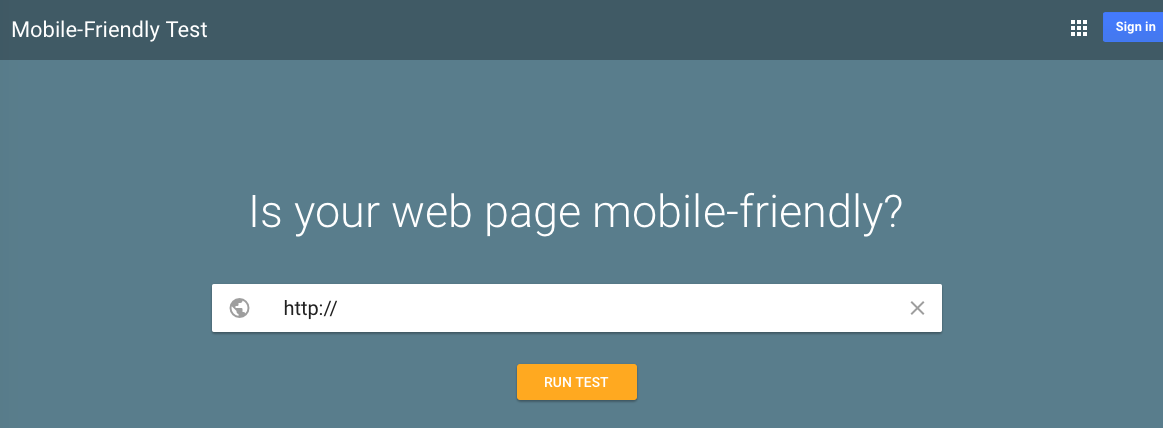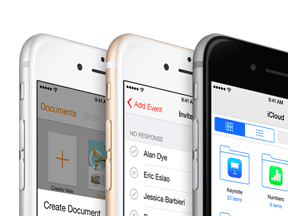
Google is switching to a mobile-first index in 2018, wherein rankings for desktop and mobile devices will be based on a site’s mobile experience. Google’s “Mobile-Friendly Test” will identify if a site is mobile optimized and can, also, suggest performance improvements.
Most searches on Google are from mobile devices. In 2018, Google will judge your desktop and mobile sites’ worthiness to rank based on your mobile implementation.
If your mobile experience isn’t already as fast or complete as your desktop experience, now is the time to prepare. In that vein, Google released some advice this week on moving to a responsive site. Responsive design is the best avenue from an search engine optimization perspective, certainly, but it comes with some hefty architecture changes.
As you build your budgets for 2018, make sure they contain improvements to your site’s mobile experience.
What Is the Mobile-first Index?
Since its inception, Google and other search engines have been desktop-first. They indexed and ranked content — regardless of whether it was designed for mobile, tablet, or desktop devices — based on desktop ranking signals. This made sense because searchers were primarily using desktop computers.
Now, however, the reverse is true. More Google searchers use smartphones than any other device. Therefore, Google is swapping out its entire index to a mobile-first orientation.
There have been signals around this mobile focus for years: “Mobilegeddon” back in 2015, wherein Google included mobile-friendliness as a ranking signal, and warnings for almost a year about the coming of a mobile-first index.
Google has been testing its mobile-first index invisibly with a growing number of searchers, fine-tuning it and getting it ready for prime time. While there isn’t a firm launch date, it’s expected to debut in 2018. Google originally planned the launch for end of 2017, but then pushed it back.
Google engineers have said that there’s no cause for alarm, that they don’t plan for rankings to change all that much, and that there will be a lot of communication before it actually rolls out.
Site Performance
Regardless of its soothing words, what we do know is that the mobile-first index is coming soon to Google, and ecommerce sites caught unawares could face some natural search traffic and revenue issues as a result.
If you already have a responsive site, in which desktop and mobile devices are served the exact same URL loading the same content via different experiences tailored to each screen size, and whose pages have passed Google’s mobile-friendly test, there should be no impact: Your site delivers the same content on the same URL that has the same quality and quantity of links pointing to it at the same speed from the same servers and systems. Those ranking signals won’t change from desktop to mobile versions, so your rankings shouldn’t change, either.
If you do not have a responsive site, it gets a little more complicated.
Is the full selection of desktop content available on your separate mobile site or is it a limited set of content and functionality tailored specifically to a mobile audience?
If your mobile site offers the exact same content and navigation in its entirety as your desktop site does — and if your mobile site loads as quickly and is optimized according to Google’s specifications for mobile sites — then you shouldn’t experience performance issues, based on what Google is saying.
However, if your mobile site has less content and navigation than your desktop site, you may be at risk for ranking issues. This is unclear based on Google engineers’ comments to date, but it is possible. If your mobile site falls into this category, analyze your risk based on the ranking of the content not represented on the mobile site.
Ironically, companies without a mobile site could fare better than those with an incomplete one.
If you have no mobile site at all, the desktop site should continue to rank just as it does today in mobile search results. It’s not a mobile-only index, to be clear, it’s a mobile-first index. Where a mobile site exists, that mobile site will be considered primary.
What to Do Now
Bottom line, Google hasn’t announced a launch date for its mobile-first index. There are many unanswered questions. Google has said that it will provide a lot of notice before switching, but in my view the launch could be as early as the first quarter of 2018. The end of the first quarter is six months away.
How long did your last redesign take to strategize, create, and develop? It was probably longer than six months. If you operate a separate mobile site with limited content, or if your separate mobile site is not optimal, start planning mobile improvements or a move to responsive design now. Don’t wait until Google makes its announcement, which may not leave you enough time to prepare.





